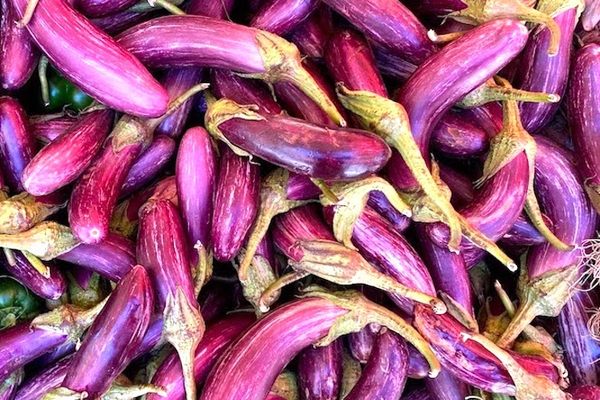Fruits & Vegetables
Licorice Root
The washed and dried root of the licorice plant was once a popular natural “candy.”
Though extracts made from licorice root form the base of many popular licorice candies today, folks sometimes take a bite straight from the source. In Spain, Italy, France, and the Netherlands, chewing on the gnarly brown stick stirs up fond memories for those who grew up eating the natural “candy” before it was overshadowed by more processed forms of its sweetness.
The root’s Dutch name, zoethout, literally translates to “sweet wood.” This gets to the heart of what makes the licorice plant a beloved ingredient: Its roots and rhizomes hide a flavor that is 50 times sweeter than sugar. A common additive in medicinal tinctures and elixirs, the harvested root front-loads the taste buds with a slightly bitter and medicinal taste, before giving way to a sweet and aromatic sap. Children who grew up chewing the sturdy stick learned to suck the plant for its sweet marrow while spitting out its woody pulp.
However, the rise of candy-making in the 20th century shifted preferences toward licorice-flavored candies in various shapes, sizes, and levels of sweetness (or saltiness, if you’re in the Netherlands or Finland). With chewing the medicinal root falling out of favor, the nostalgic must do some extra work in seeking out the old-timey flavor. Still, the washed, dried root can be found in specialty stores and at farmer’s markets across Europe.
Where to Try It
-
Holland & Barrett
Beurstraverse 168, Rotterdam, 3012, NetherlandsThis health food and supplement store often sells licorice root. Try any of their locations, including this one in Rotterdam, or check their store online: https://www.hollandandbarrett.com/.
-
Pontefract Liquorice Festival
Pontefract Town Hall, 3 Bridge St, Pontefract, WF8 1PG, United KingdomMost of the festivities cluster around town hall, but you can also board the "Liquorice Land Train" to travel from the hall to Pontefract Castle.
Written By
 Dr Alan P Newman
Dr Alan P Newman
Sources
- www.foodtimeline.org/foodcandy.html
- doi.org/10.1177/146642409811800517
- www.botanical.com/botanical/mgmh/l/liquor32.html
- books.google.com/books/about/Sweets.html?id=ETluYRHyjKwC&printsec=frontcover&source=kp_read_button#v=onepage&q&f=false
- books.google.com/books?id=7_KPgxEglHAC&pg=PA247&dq=licorice+root&hl=en&sa=X&ved=0ahUKEwj2rLHrm4HdAhVtUt8KHS6nBdQQ6AEIMDAC#v=onepage&q=licorice%20root&f=false
- www.dutchsweets.com/vliet-zoet-hout-licorice-root-p-91.html














